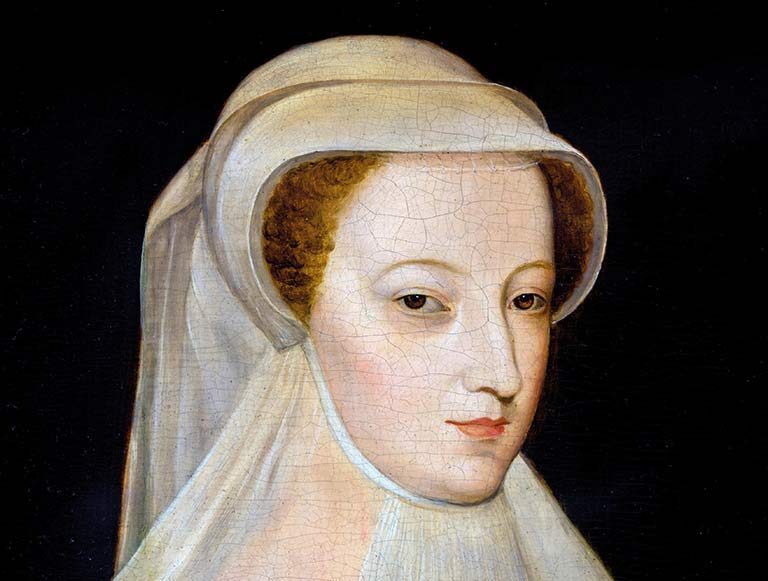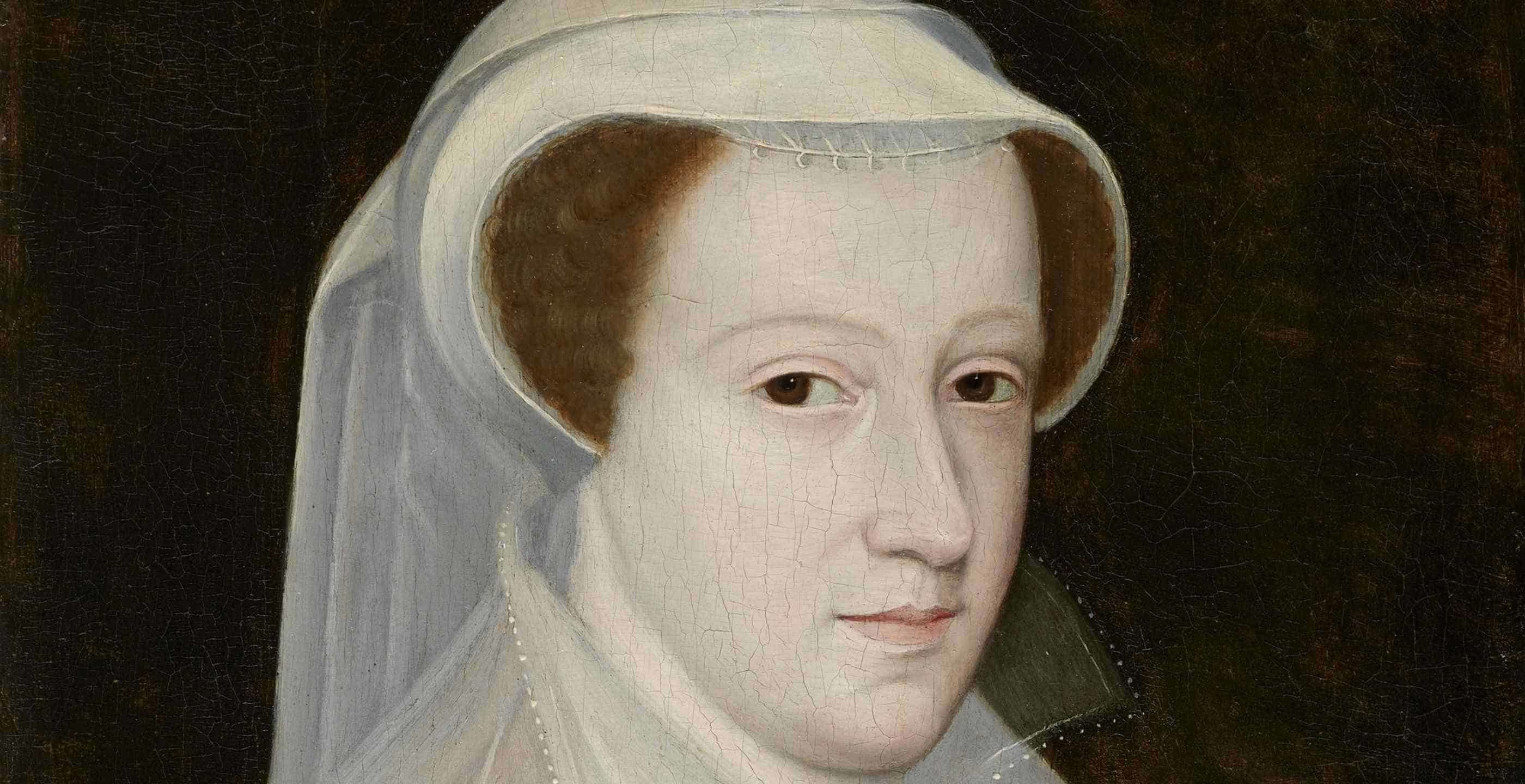Mary Queen of Scots, a luminary of 16th-century European royalty, left an indelible mark on the pages of history during her reign over Scotland from December 14, 1542, to July 24, 1567. Her era witnessed political intrigues, tumultuous marriages, and a life fraught with both grandeur and tragedy. Beyond her regal status, Mary was renowned for her captivating beauty, a quality that garnered attention and admiration. In the tapestry of her life, the allure of her physical presence resonated with her contemporaries of the time, contributing to her complex and often tumultuous relationships. Here are fascinating details concerning the life, marriages, schooling, reign, imprisonment, and execution of Mary, Queen of Scots.
Mary Queen of Scots Interesting, Surprising, Fun Facts
In unraveling the tapestry of Mary, Queen of Scots’ life, one encounters a saga marked by mysterious beginnings, opulent captivity, political intrigues, and the poignant divergence of familial loyalties. The tale of Mary becomes a kaleidoscope of complexities, offering glimpses into the enigmatic corridors of power and the enduring impact of choices made within its intricate confines.
1. Matrimonial Odyssey: Francis II to Bothwell
Mary embarked on a fascinating matrimonial odyssey that unfolded in three distinct chapters. Her initial union was with Francis II of France, a marriage that added the title of Queen Consort of France to her illustrious name. This brief union set the stage for the subsequent intricacies of her personal life.
Her second marriage to Henry Stuart, Lord Darnley, delved into the realms of controversy and scandal. The suspicion of Lord Darnley’s murder cast a dark shadow over Mary’s reign, creating ripples of political unrest and personal turmoil.
The final chapter in Mary’s marital saga saw her joined with James Hepburn, Earl of Bothwell. This union, shrouded in controversy due to Bothwell’s suspected involvement in Lord Darnley’s death, marked a turning point in Mary’s destiny.
2. The Mysterious Life and Untimely Death of James V
Mary’s lineage is traced back to James V of Scotland, a monarch thrust into kingship at the tender age of 17 months following his father’s demise in a fateful battle. Yet, the enigma surrounding James’s death at 30 perplexed historians. Allan Massie’s tome, The Royal Stuarts, describes the demise as occurring “of no discernable cause,” a curious state of affairs where the king seemingly lost the will to live. Mary’s entrance into the world on December 8, merely six days before this mysterious demise, marked a twist of fate. Despite James V having numerous illegitimate offspring, his two legitimate heirs from the second wife, Mary of Guise, had tragically perished within a day of each other a year prior. As the sole surviving legitimate heir, Mary ascended to the throne, etching her name as the youngest-ever British monarch.
3. Mary, Queen of Scots: A Life Unfolding Amidst Intrigues
Contrary to the bleak existence one might envision for a prisoner, Mary experienced a life of opulence and ease. Elizabeth I, with no intention of either exonerating or prosecuting Mary, strategically placed her under constant surveillance. Mary, a significant threat to the English crown, found herself entangled in multiple conspiracies against Elizabeth. In 1571, Elizabeth’s agents unraveled a plot involving the Duke of Norfolk and Spanish troops, aiming to overthrow Elizabeth and install Mary as the queen.
Faced with this peril, Mary declared her desire to retire, relinquishing any claim to the English throne. She expressed a longing to return to her son, James, proposing an arrangement with Elizabeth to end her captivity. However, the diplomatic intricacies took an unexpected turn when James, instead of supporting his mother, allied with Elizabeth.
4. The Complex Dance of Alliances and Elizabeth’s Calculations
Elizabeth’s strategy unfolded not in a binary of acquittal or prosecution but in the subtlety of surveillance. Mary’s presence remained a constant concern due to her status as the legitimate sovereign in the eyes of English Catholics. Elizabeth, acutely aware of the precarious position, chose a path of vigilance. The conspiracies against her throne fueled Elizabeth’s apprehensions, shaping the trajectory of Mary’s life within the confines of luxurious captivity. The intricate dance of alliances, as exemplified by James’s unexpected alignment with Elizabeth, underscored the intricate political landscape in which Mary found herself entangled.
5. The Diverging Paths of Mother and Son
Mary’s desire for liberation, coupled with her offer to renounce the English throne, showcased a nuanced understanding of the political intricacies surrounding her captivity. However, her son’s divergence in allegiance highlighted the complexities of familial ties amidst political strife. James’s decision to align with Elizabeth, rather than support his mother’s aspirations for freedom, added another layer of complexity to the already convoluted narrative. The fates of mother and son, once seemingly intertwined, took diverging paths amid the chessboard of political alliances and power dynamics.
72. The Posthumous Honors and Long Reign of James
In the aftermath of Mary’s execution, her remains found a resting place in Peterborough Cathedral. However, in 1612, James undertook the extraordinary act of exhuming her body, transferring it to the prestigious Westminster Abbey—a move considered an honor of the highest order. This was part of a larger plan that also saw Elizabeth I similarly reinterred nearby. James I’s reign endured for an impressive 57 years, marking the lengthiest rule of any Scottish monarch and leaving an enduring imprint on the pages of history.
More Interesting Articles
- 61 Interesting Charlie Sheen Facts
- 19 Interesting Facts About Ryan Lochte
- 12 Interesting Fidel Castro Facts to Experience
- 11 Interesting Facts About Nostradamus
- 16 Interesting Bill Gates Facts that Inspire Anyone
- 16 Amazing Catherine Zeta-Jones facts
- Vasco da Gama – Route | Facts | Timeline | Biography
- Ferdinand Magellan – Voyage | Death | Route | Facts
- Hernán Cortés Who Defeated the Aztec Empire
- The life of Alexander Hamilton in American History
- Biography of Liaquat Ali Khan for the Beginner
- Indira Gandhi Biography from the Indian History
- Biography of Vikram Seth in 100 Words and More
- Biography of Bibhutibhushan Bandopadhyay
- Biography of William Wordsworth in 150 words
- Philosophies of George Washington on Political Parties
- George Washington Teeth – Hidden Facts Revealed
- George Washington Fun Facts that Provoke Inspiration
- Zachary Taylor – US President Biography and Death
- William Shakespeare Biography and Contributions

